This post may contain affiliate links. Please read our disclosure policy.
Hungary’s national spice is popular around the world, but if it’s not currently in your spice rack, these are the best paprika substitutes for whatever you’re cooking.
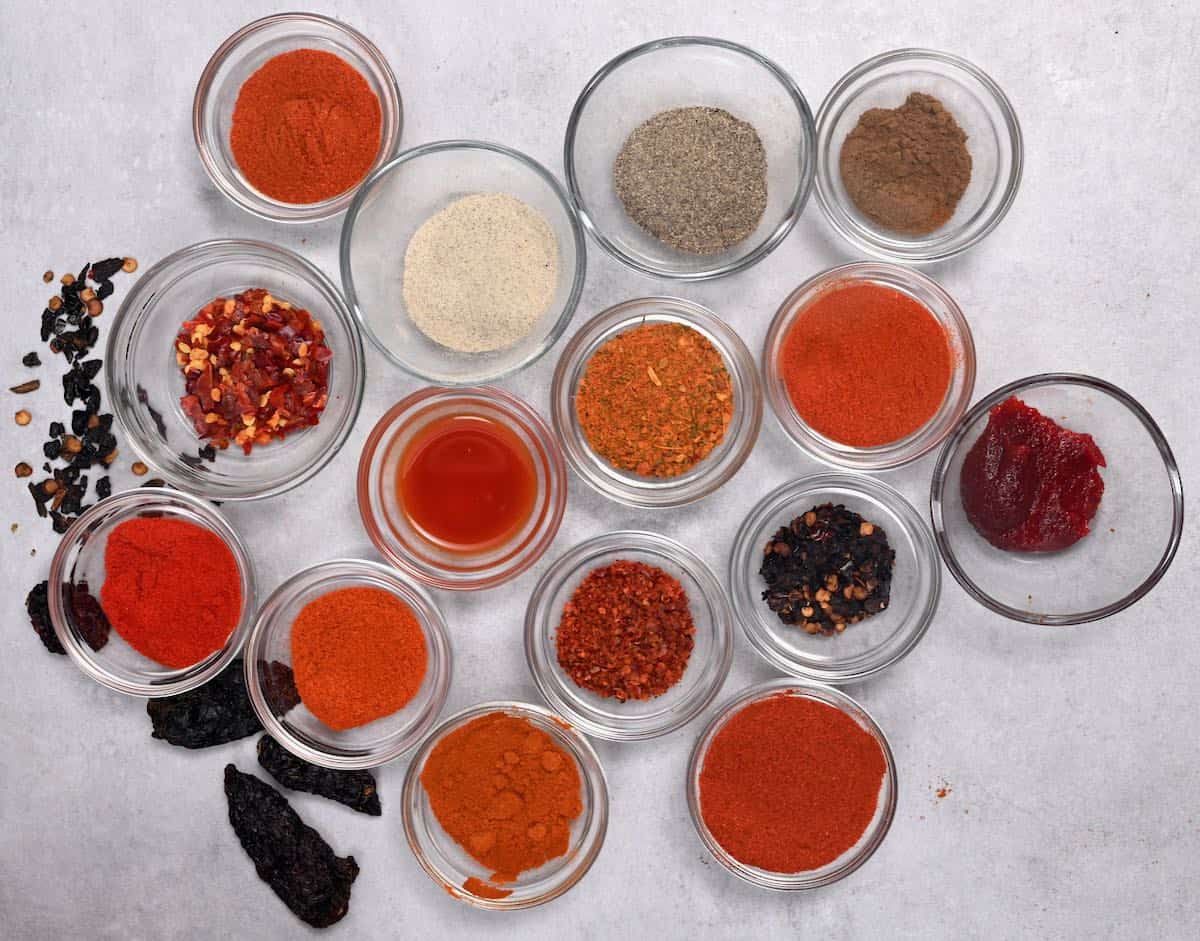
What is paprika?
Paprika is a spice made from specific ground red peppers, known for its deep crimson color. Most frequently used in Eastern European cooking and popular around the world, it has three distinct varieties.
With three distinct varieties, the type of paprika you use will influence your dish’s taste and texture. Technically, each can replace each other – though your spice tolerance will determine how much you use and whether you opt for hotter paprika substitutes.
Types of paprika
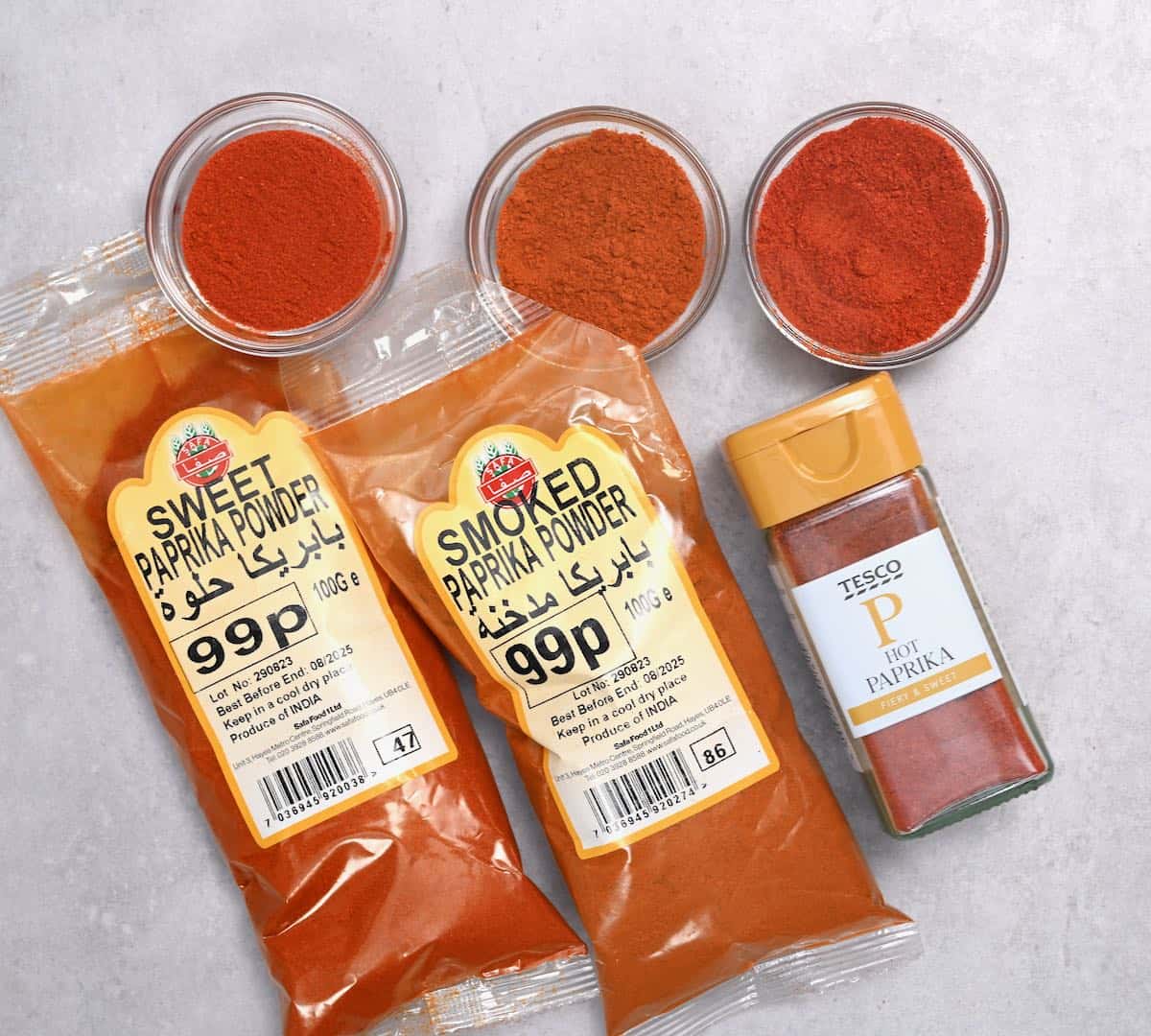
- Sweet (Mild): Touted as Hungary’s national spice, sweet paprika has a bright, fruity kind of flavor from the ground pepper. You’ll find it most often in goulash or sprinkled on deviled eggs.
- Smoked: Otherwise known as Spanish paprika, it has the same pepper base, but the peppers are dried over a wood fire and then ground, giving them a distinctly smoky, complex flavor.
- Hot: Extra-hot red peppers form the base for spicy paprika where fewer peppers are used, but the powder still produces an intense flavor and significant heat in your dishes.
The best paprika substitutes
Pimento powder
Made from grinding down pimento peppers, pimento powder is not so far removed from paprika. This is because some recipes use pimento peppers in their blend. Pimentos are sweeter and frequently used to garnish, so it’s best used as a sweet paprika substitute.
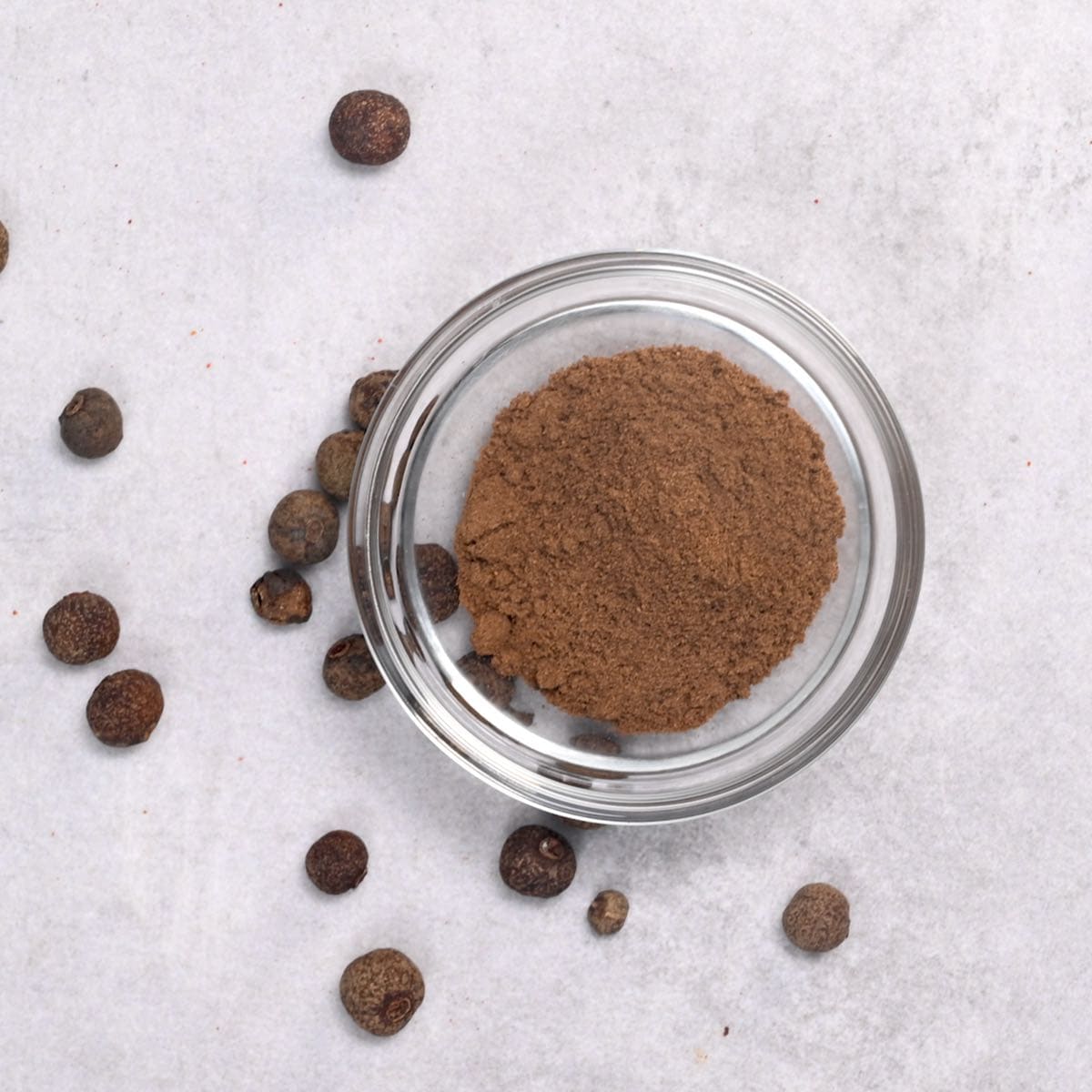
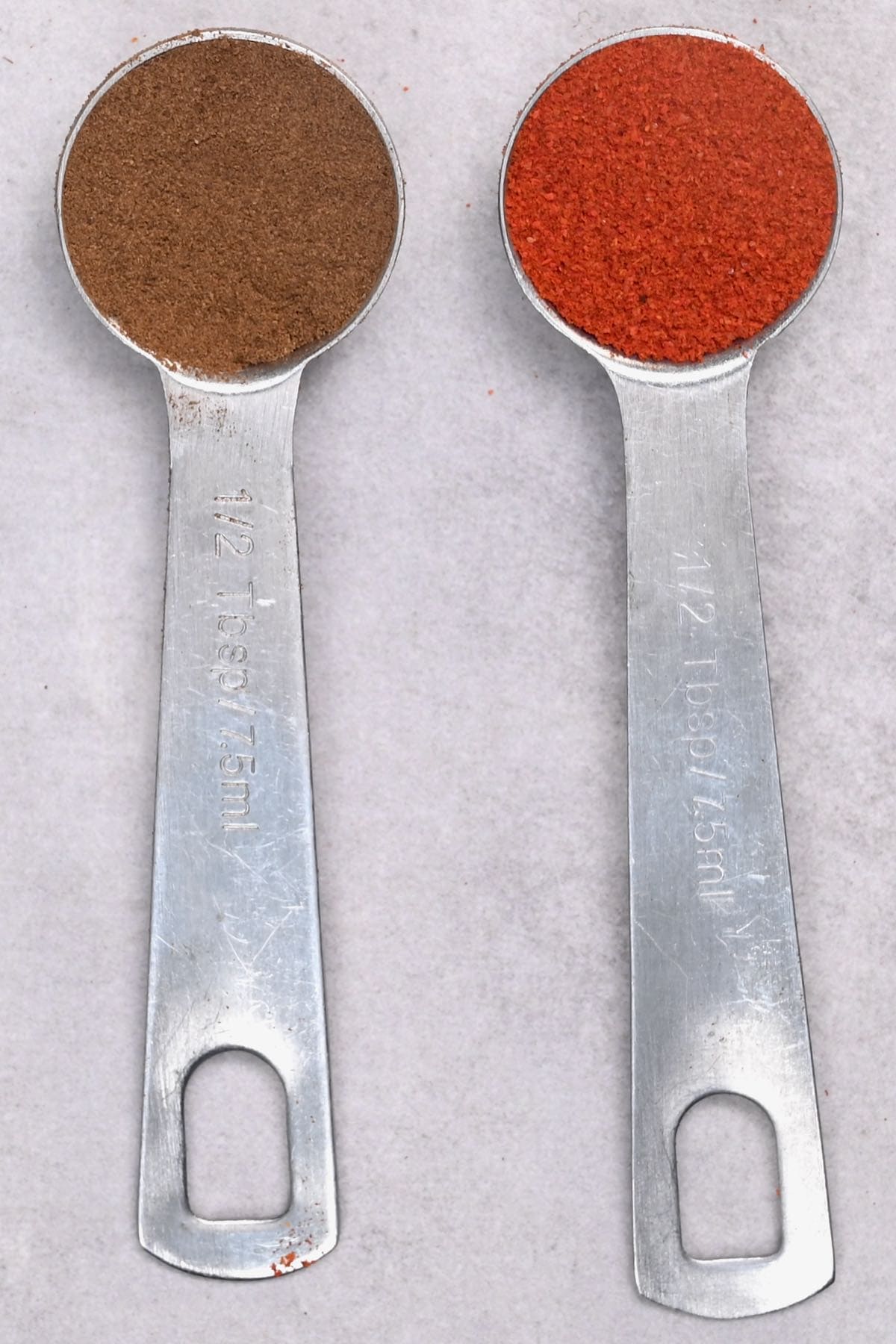
Ingredients and Measurements: Use a 1:1 ratio with pimento powder if using it as a sweet paprika substitute. Adjust measurements according to your taste preferences.
Ancho pepper powder
With its slightly sweet and smoky flavor and vibrant color, ancho pepper powder is the best substitute for paprika if you want to wow with your presentation. Made with ground, dried, and roasted poblano peppers, this is a great alternative to smoked paprika.
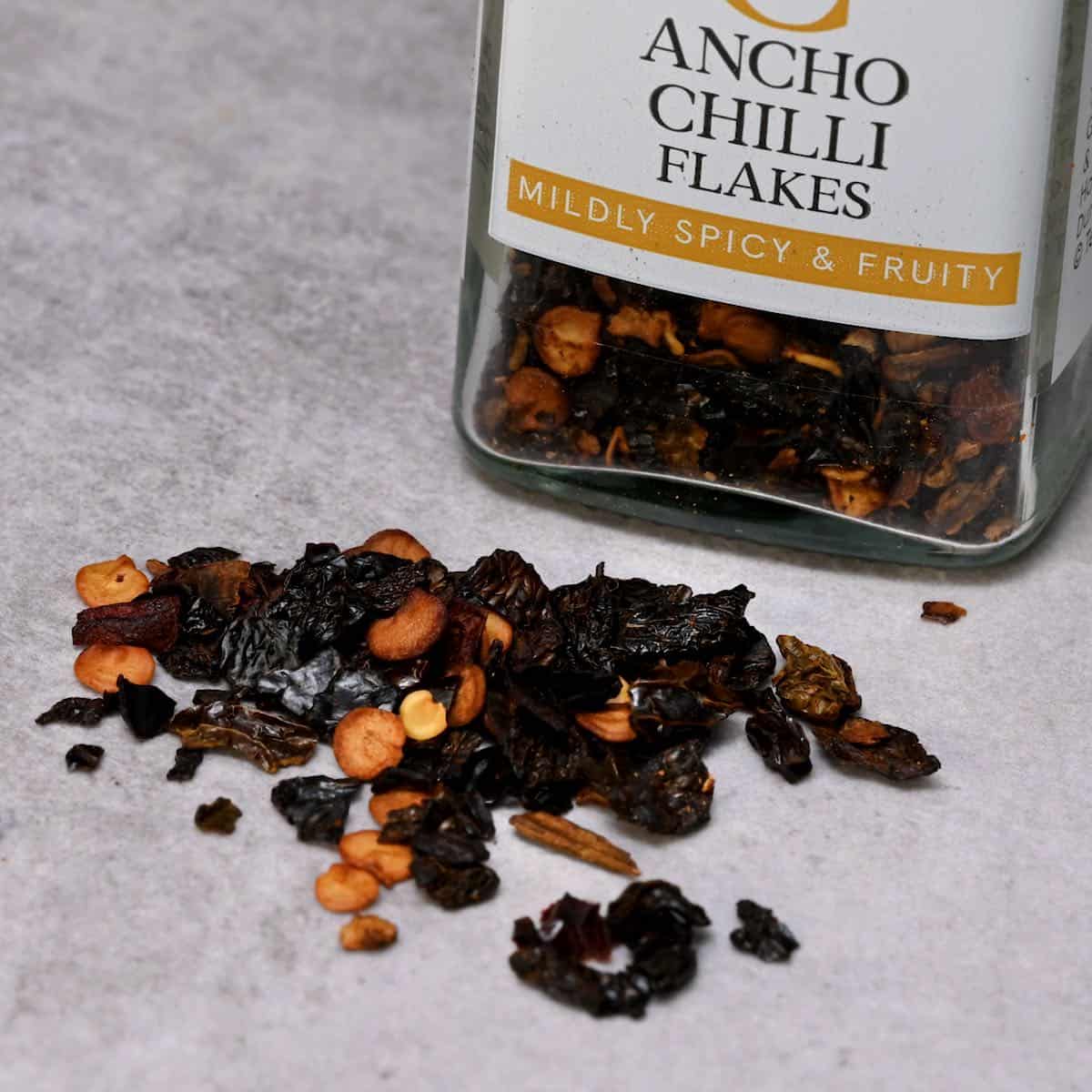
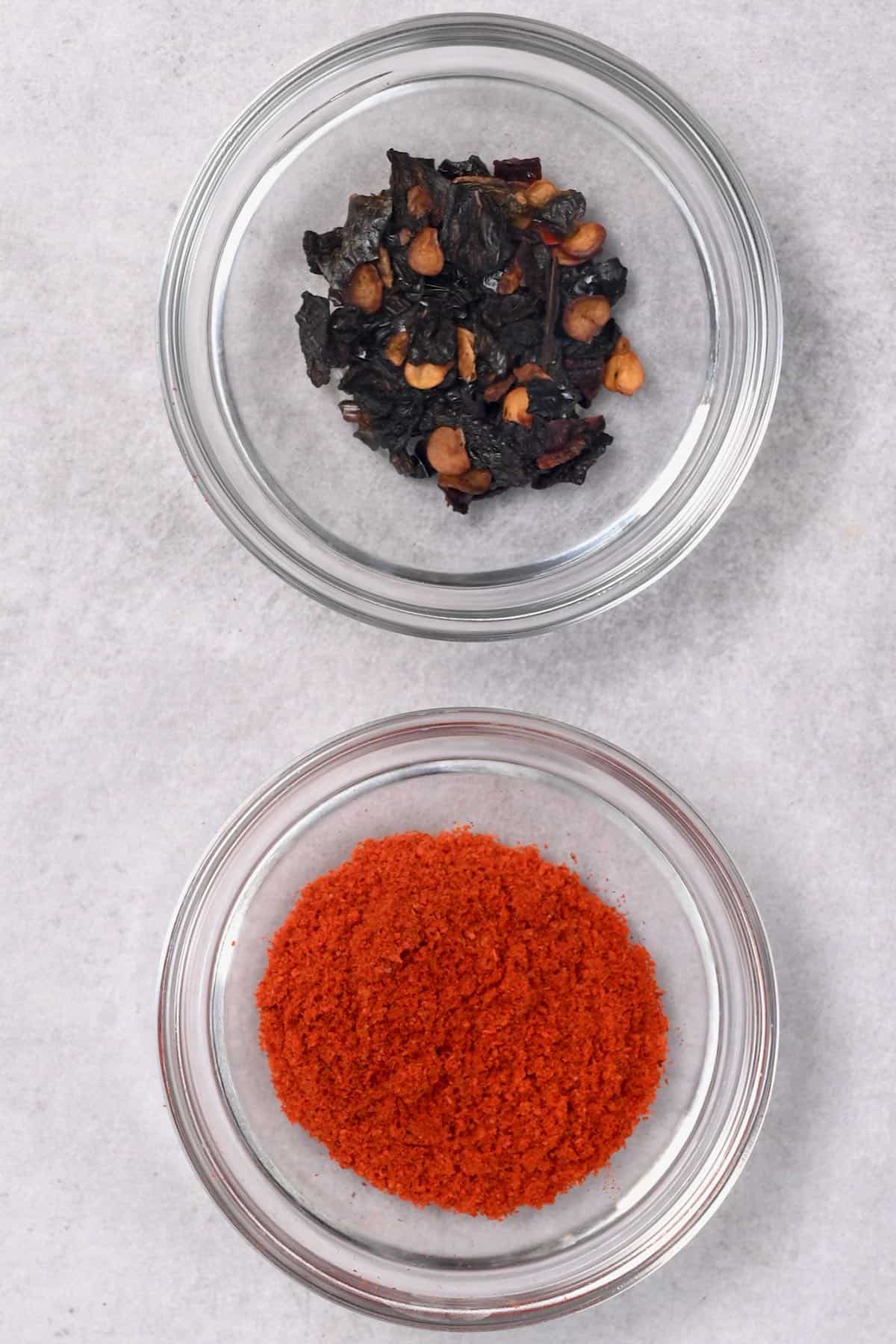
Ingredients and Measurements: Use ½ tsp of ancho pepper powder for every 1 tsp of paprika you use as the flavor is more concentrated.
Bell pepper powder
If you don’t have paprika, you can create a substitute by dehydrating red bell peppers in a dehydrator or oven. Since bell peppers are used in some paprikas, using bell pepper powder will give a similar color and flavor profile. Naturally sweet, it’s best used in place of standard paprika. It will give your dishes a mild taste but a beautiful color.
Ingredients and Measurements: For every 1 tsp of paprika, use 2 tsp of bell pepper powder.
Chipotle pepper powder
Particularly popular in Mexican and Tex-Mex cooking, the chipotle pepper brings both spice and a little smokiness to dishes. Made from the jalapeno pepper, its deep color will change the appearance of dishes when you substitute for it. Plus, it is much hotter than hot paprika!
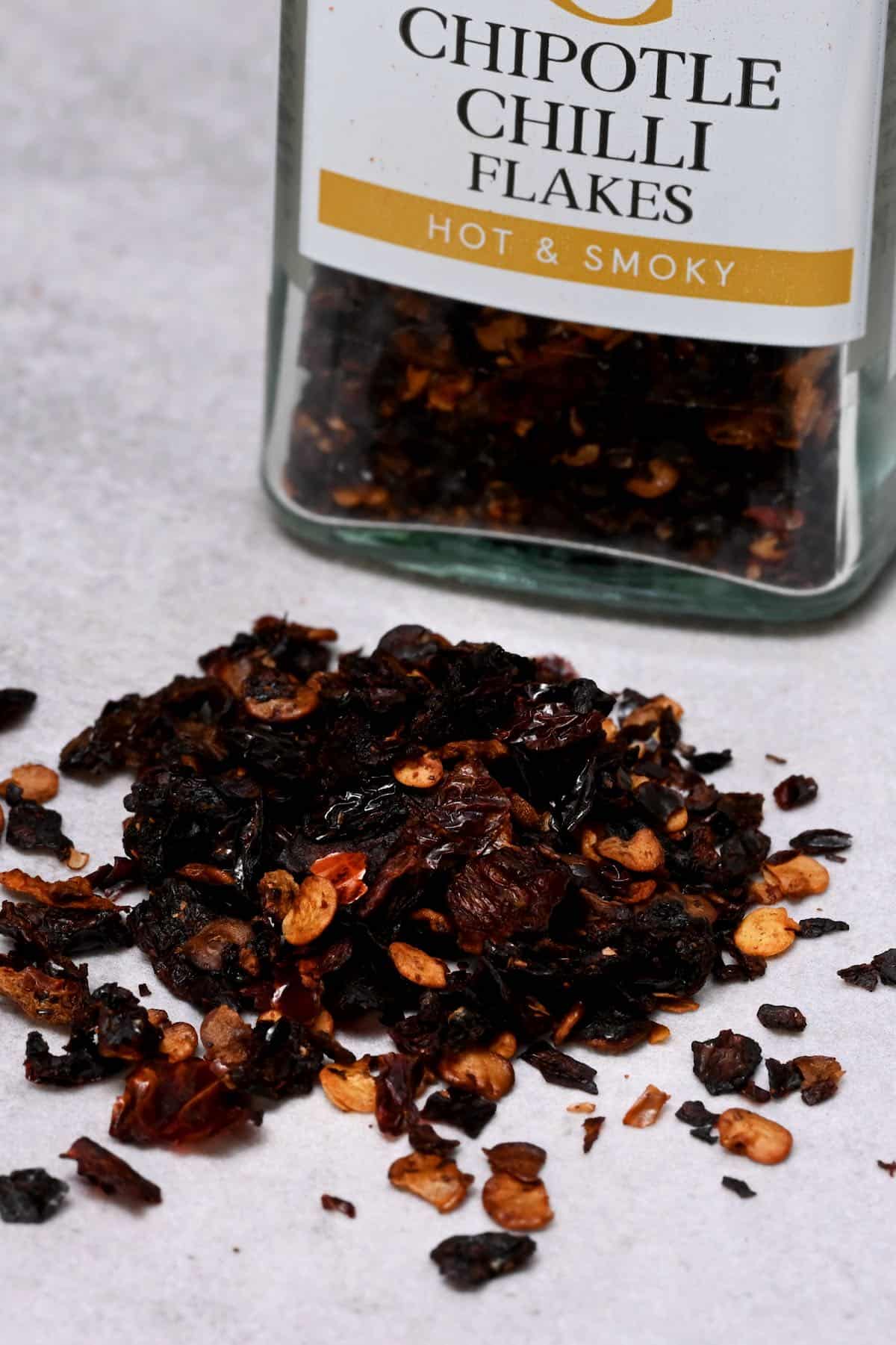
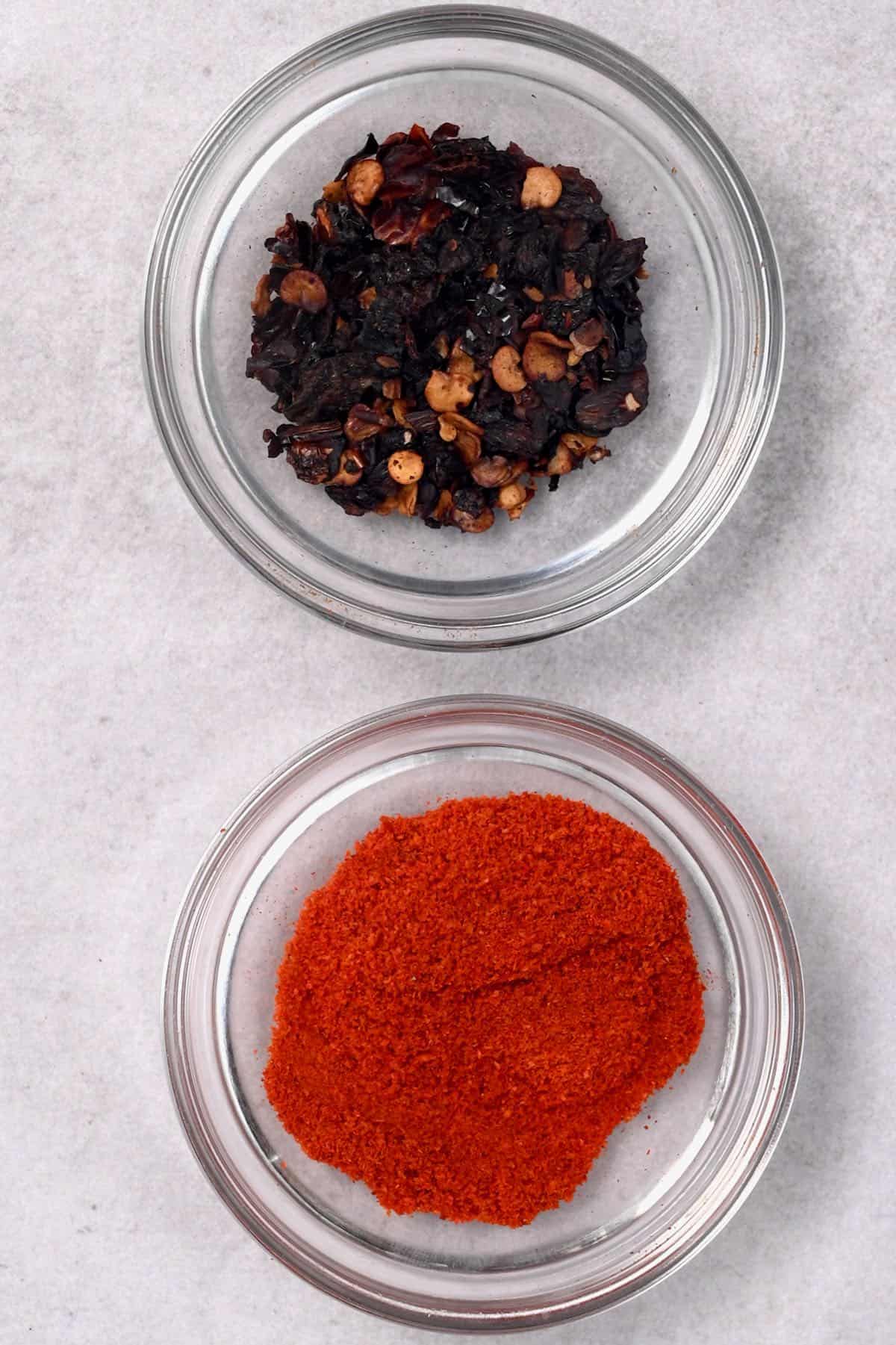
Ingredients and Measurements: Being significantly hotter than hot paprika, use ¼ to ½ tsp per 1 tsp of paprika. You can up to a 1:1 ratio if you enjoy spicy food. But it will likely change the color of your dish.
Guajillo pepper powder
Turning up the spice levels just slightly on ancho chili powder, guajillo pepper powder is most frequently used in Mexican cuisine. Because of its slightly smoky, but delicate flavor, it works best as a substitute for smoked or hot paprika. It’s particularly great for chicken and fish dishes or dips.
Ingredients and Measurements: Use ½ tsp guajillo to 1 tsp paprika – you can increase to 1 tsp if you prefer a spicier dish.
Gochugaru powder
Made from ground Korean red pepper flakes, gochugaru powder has a catch-all flavor profile. It manages to bring sweetness, spice, and smoke all at once. More frequently used for Korean cooking, its broad taste means it makes a strong paprika substitute to flavor broths and stews.
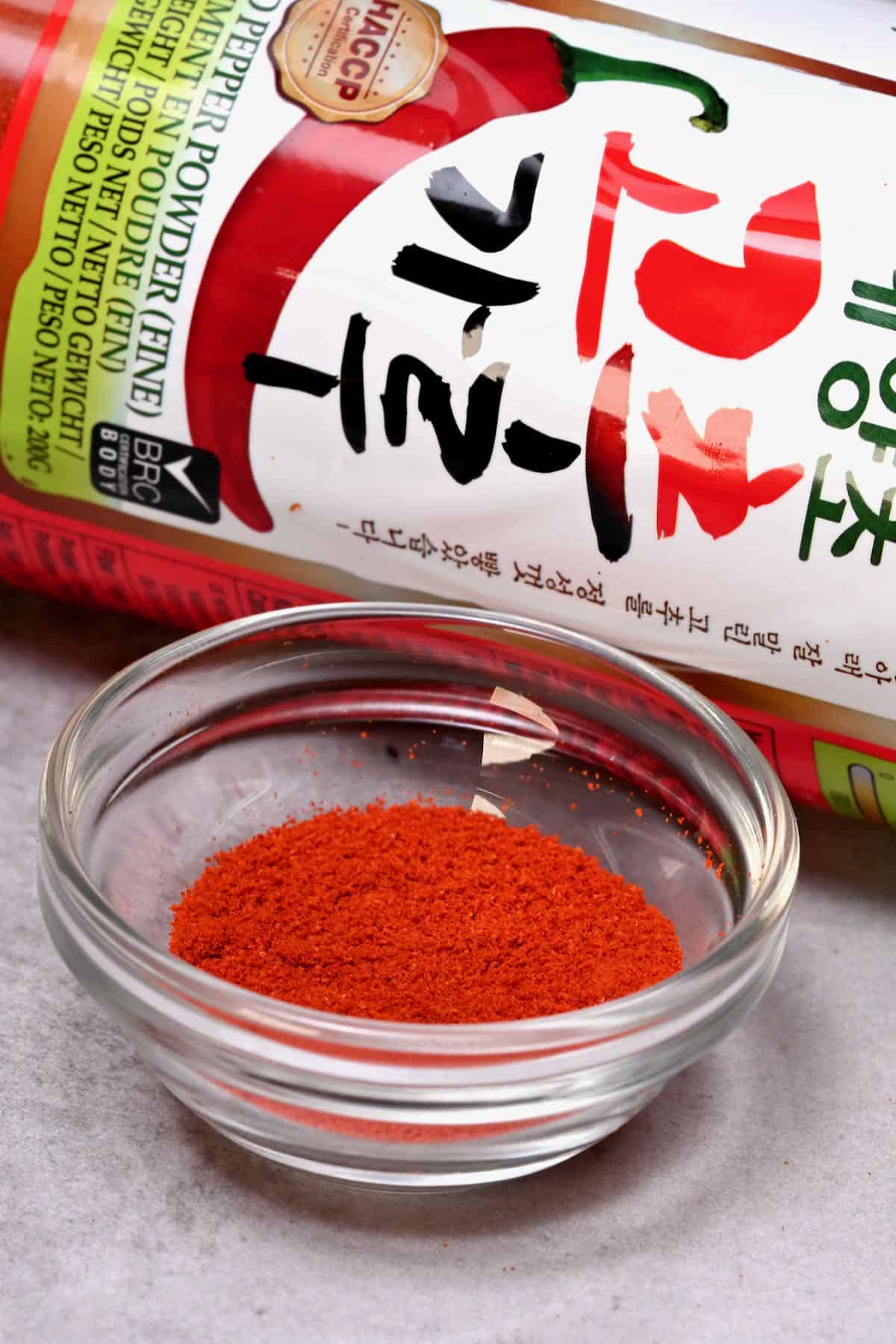
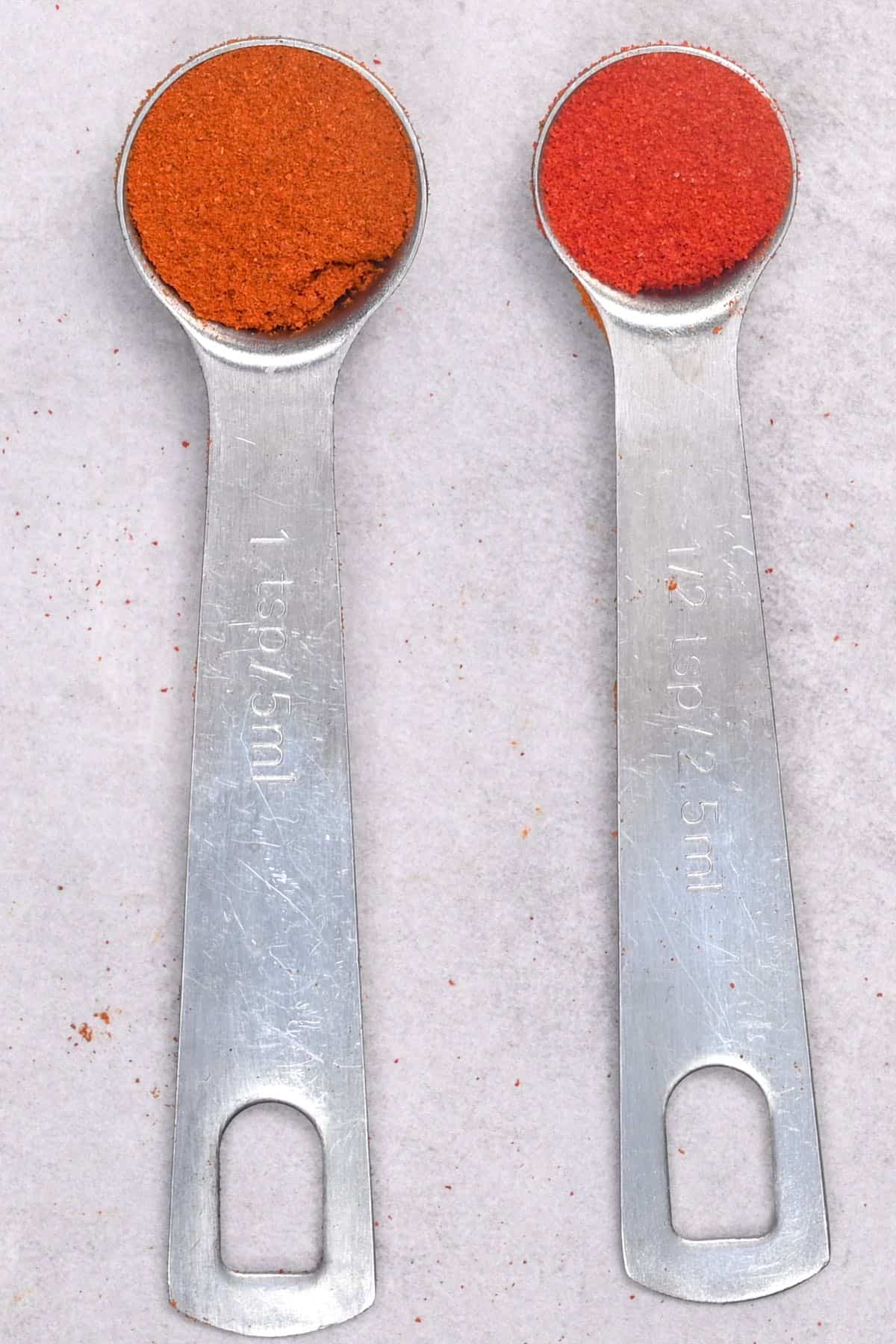
Ingredients and Measurements: Use ½ gochugaru powder to every 1 tsp of hot or smoked paprika. Because of the spice levels, it’s best used as a paprika substitute for those varieties.
Cayenne pepper powder
Likely more commonly found in spice cabinets than other paprika substitutes, cayenne pepper powder is best as a substitute for hot paprika thanks to its spicy, intense flavor. A little bit of cayenne tends to go a long way, especially if being used for marinades or seasonings.
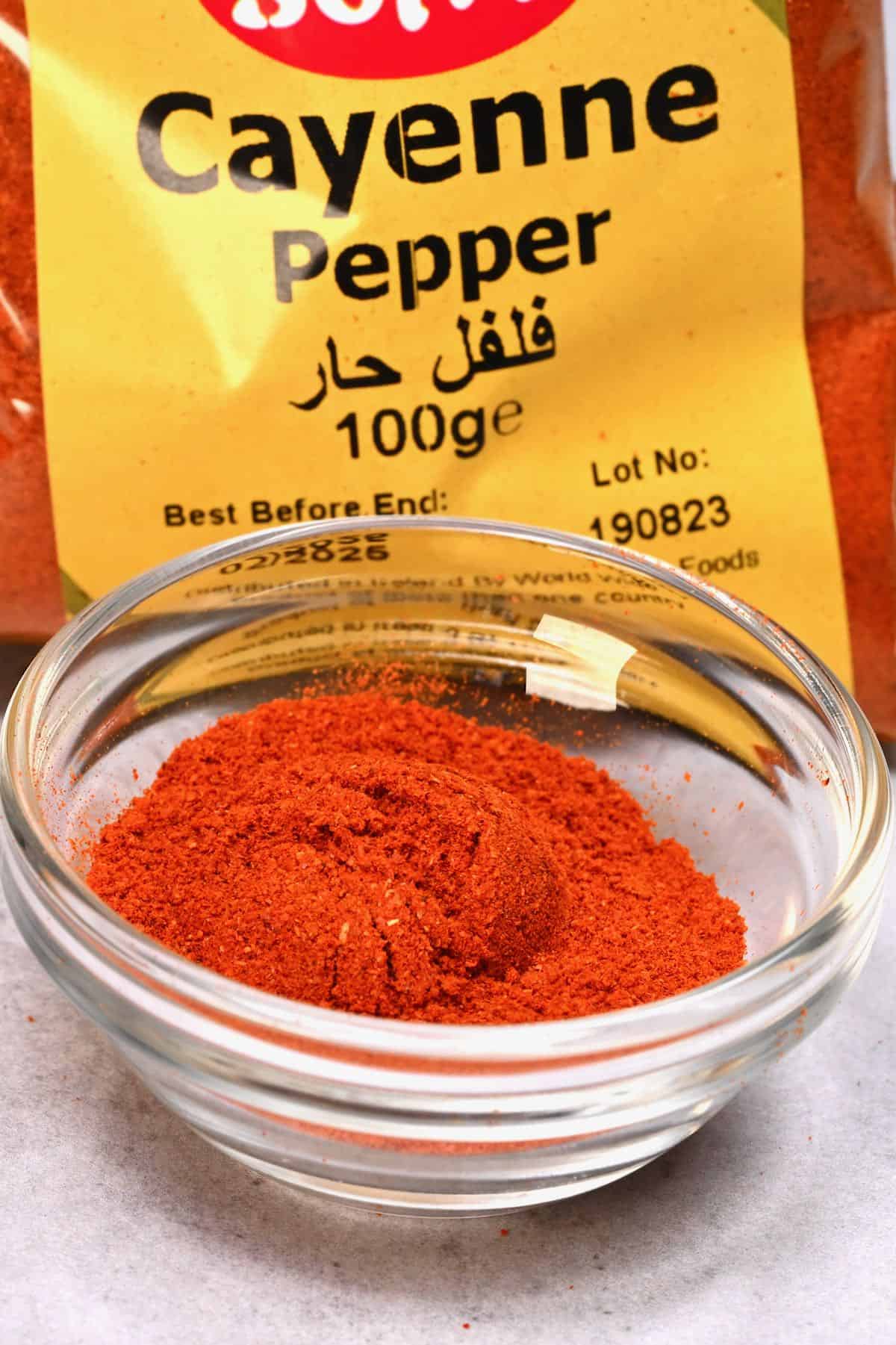
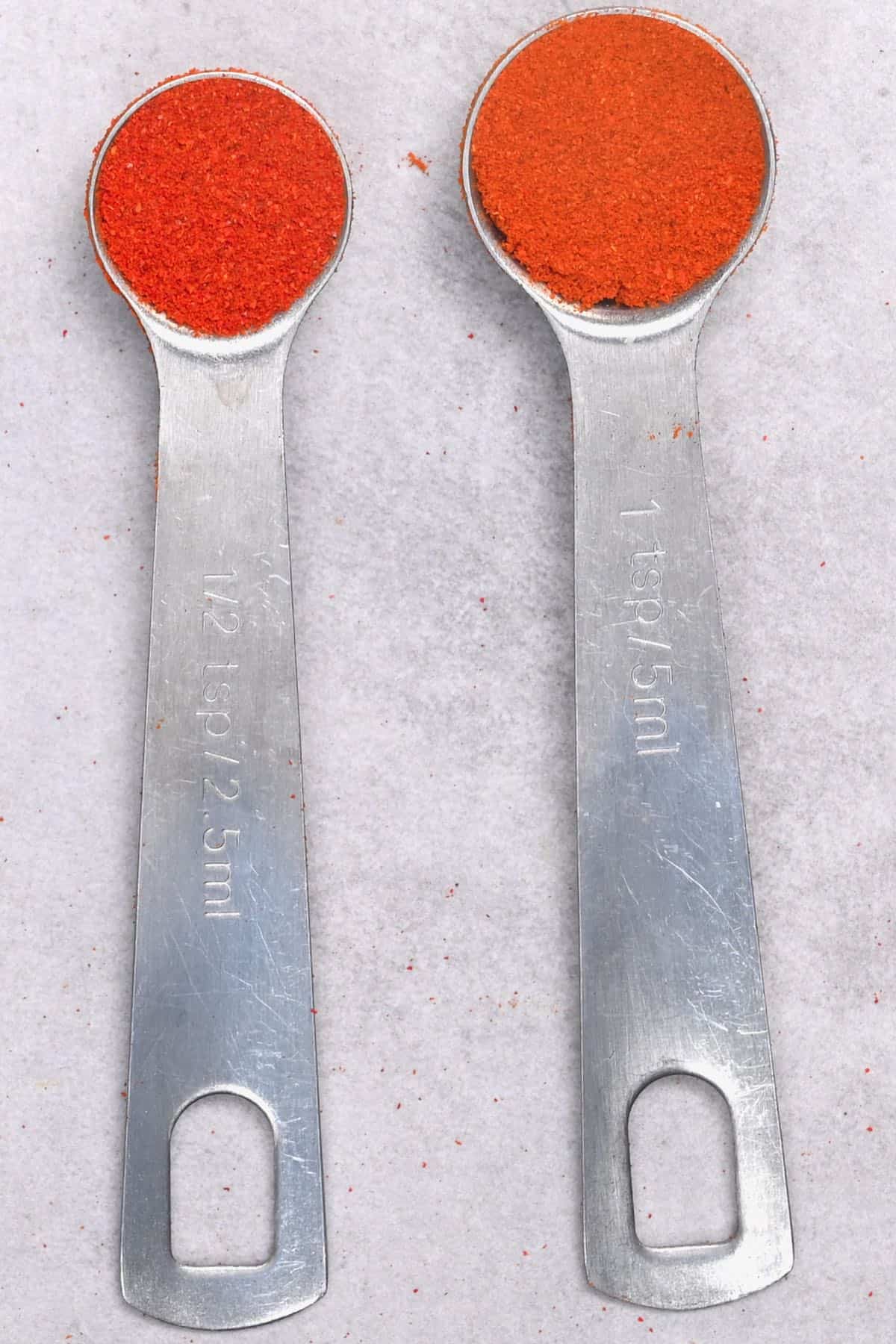
Ingredients and Measurements: Depending on how much spice you like, use ¼ tsp or ½ tsp of cayenne powder for every 1 tsp of paprika.
Aleppo pepper
Found more commonly in Mediterranean and Middle Eastern cooking, the ground powder of Aleppo peppers has a slightly smoky flavor and less heat than cayenne or chili. With a rich, deep burgundy appearance, it’s best used in place of hot paprika for seasoning or bringing flavor to dips.
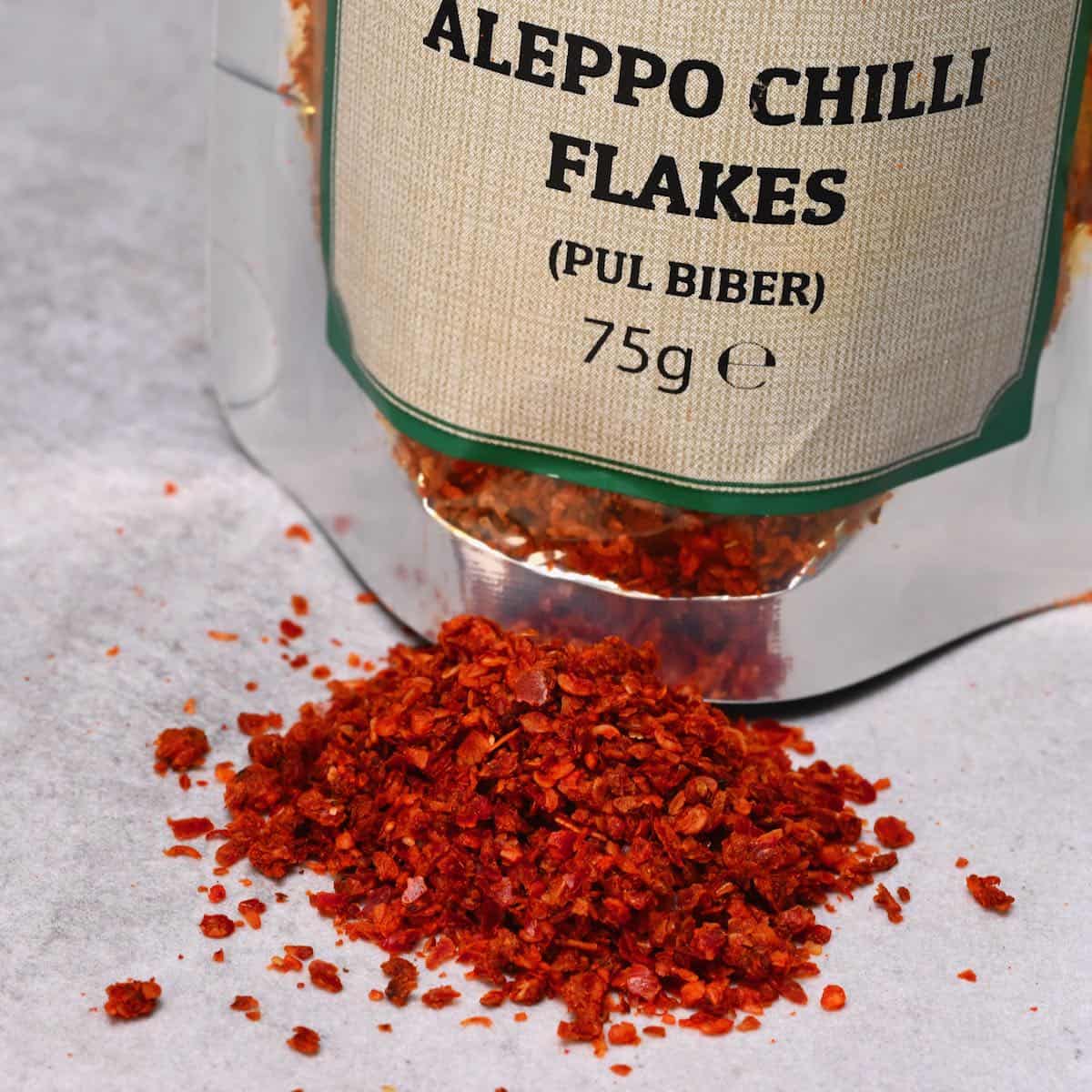
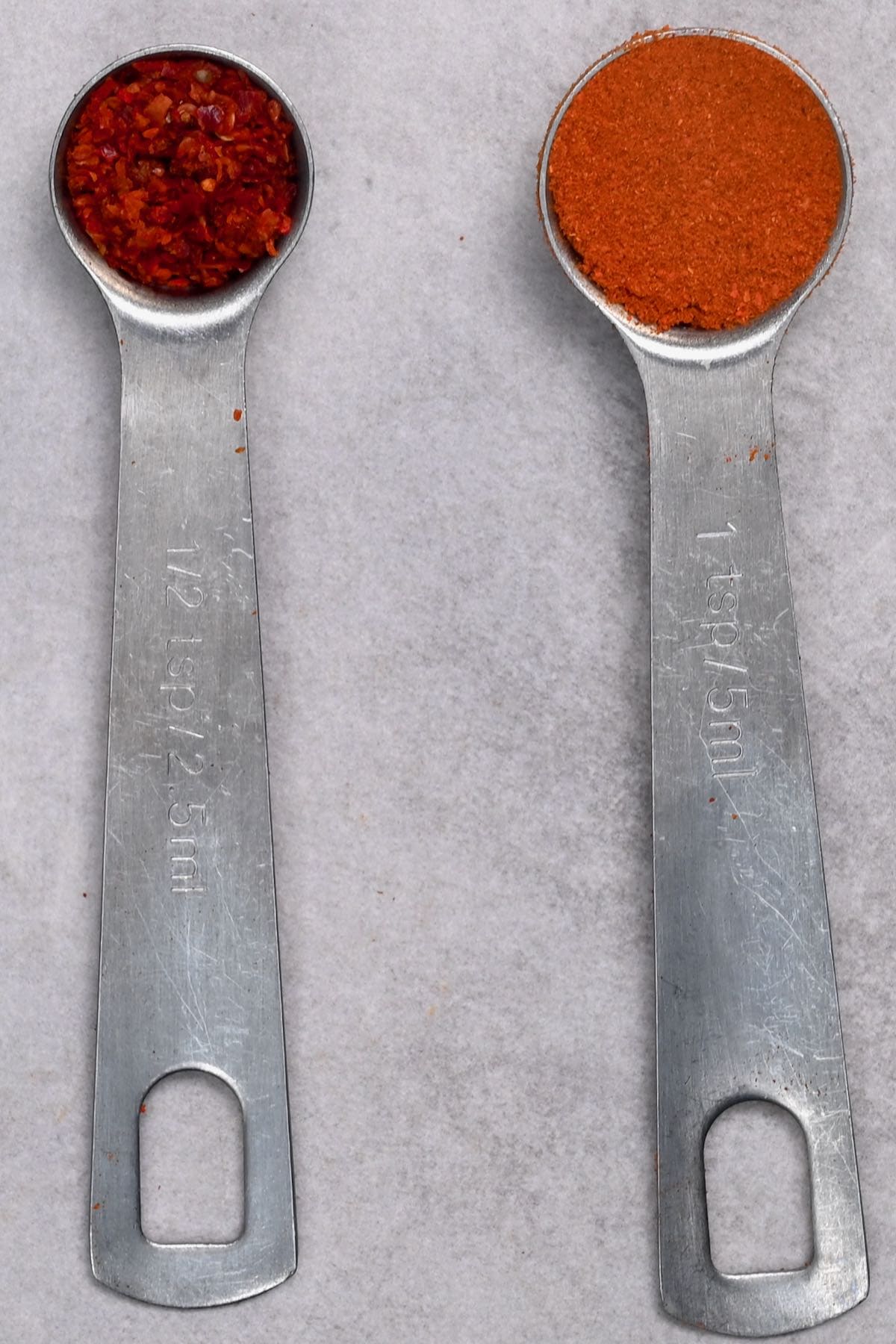
Ingredients and Measurements: Use ¼ to ½ tsp of Aleppo pepper in place of paprika. Depending on your spice preference, you can increase or decrease as you prefer.
Chili powder
Another common spice, chili powder brings a lot of heat, color, and flavor to food. Though it includes ground chilis, it’s not the only ingredient in there. Often, commercial powders add things like cumin, garlic powder, other peppers, and even paprika. Use in place of hot paprika for a dash of flavor.
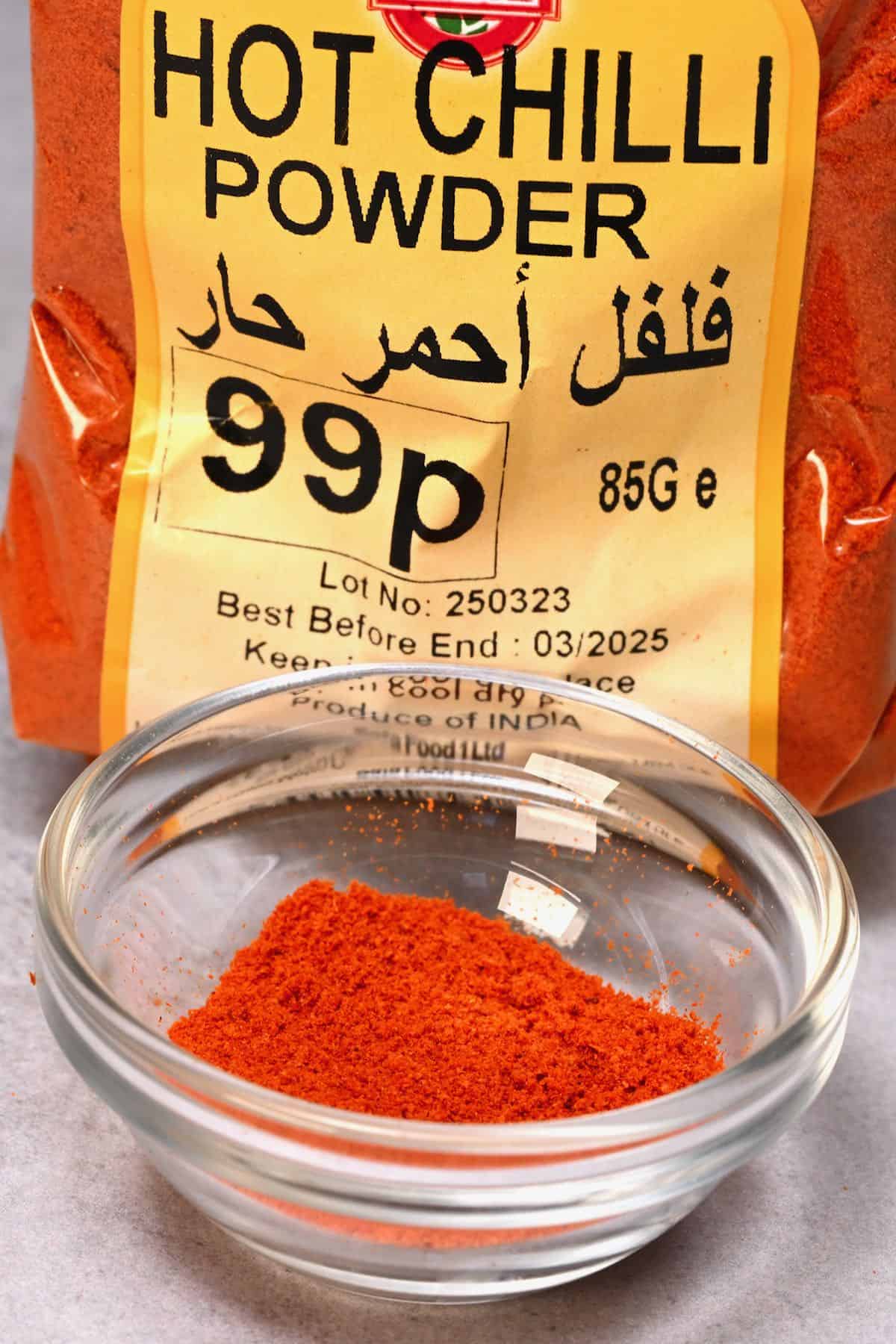

Ingredients and Measurements: Depending on your spice tolerance levels, use ¼ to ½ tsp of chili powder to 1 tsp paprika, though you can adjust.
Chili powder is best used when sprinkled into things like hummus or deviled eggs or used in small amounts, so use sparingly.
Cajun spice
Typically made from a blend of multiple spices, cajun spice uses a base of cayenne pepper, garlic and onion powder, black and white pepper, and some herbs to make a smoky, sometimes sweet spice. It’s a better substitute for sweet or smoked paprika. It will give your dish a slight orange color, rather than red.
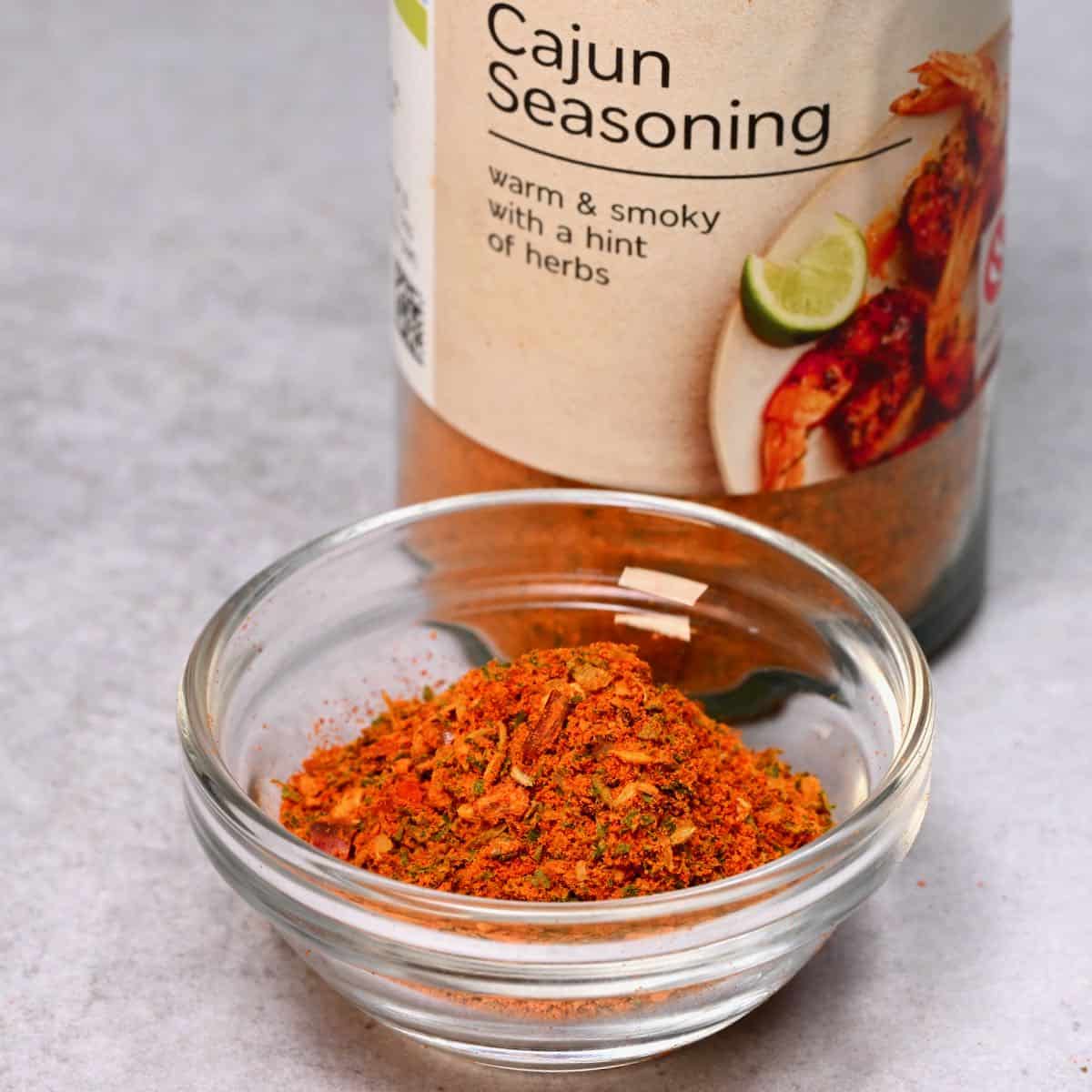
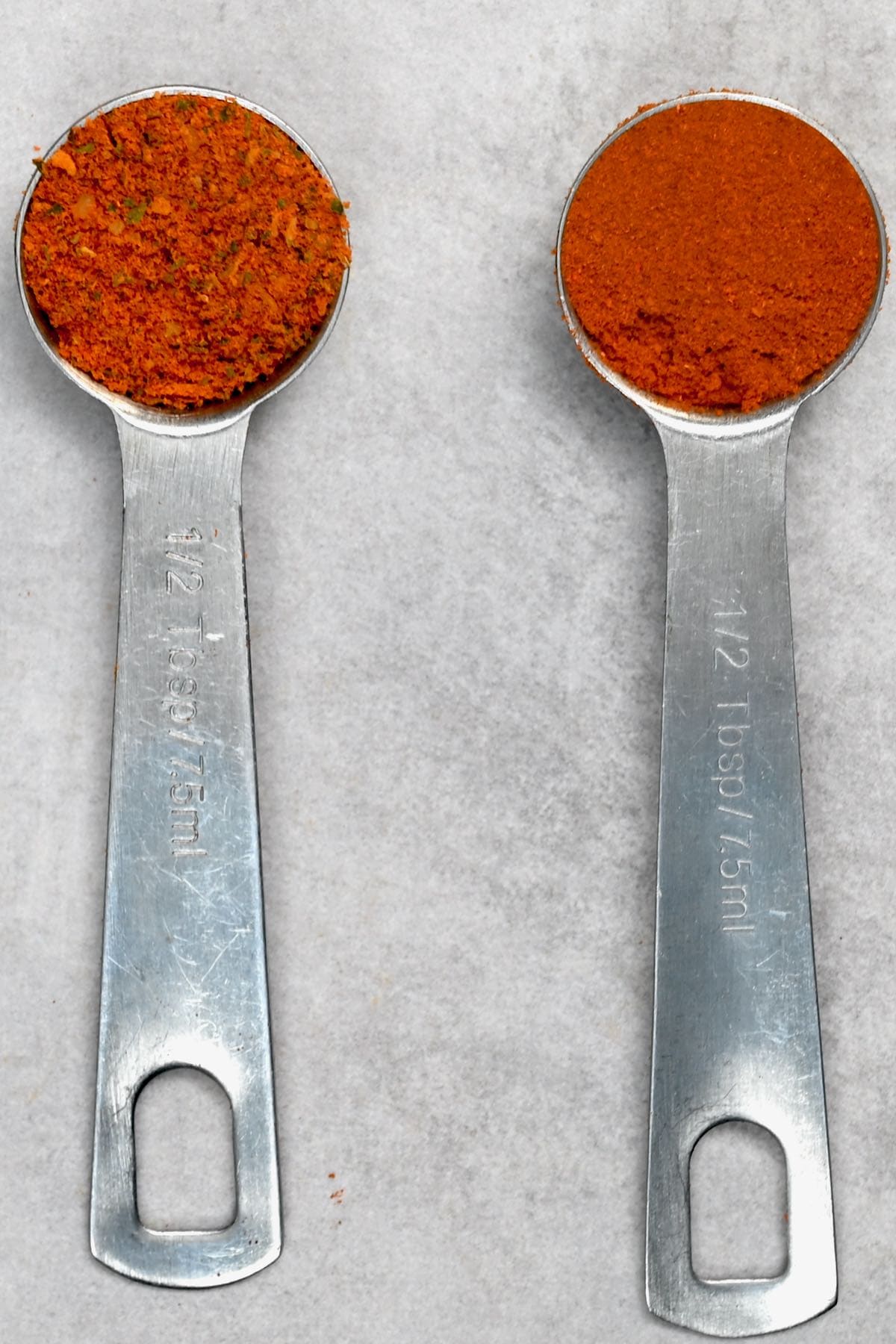
Ingredients and Measurements: Use a 1:1 ratio of cajun spice to sweet/smoked paprika.
Hot sauce
With its deep, complex flavor that blends multiple pepper varieties, hot sauce is a great way to add color and heat to your dish. Use in place of smoked or hot paprika, depending on your hot sauce of choice, especially for marinades.
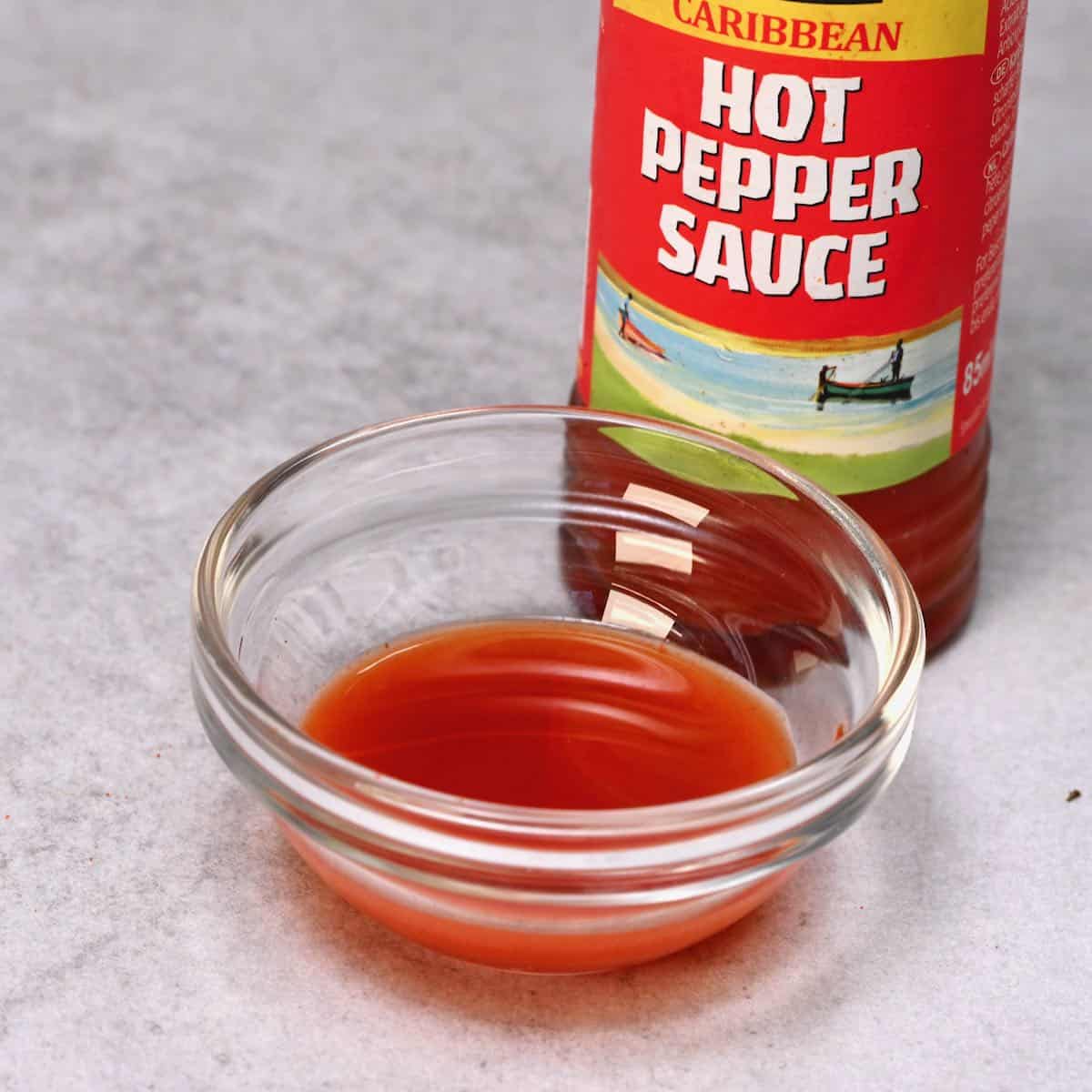
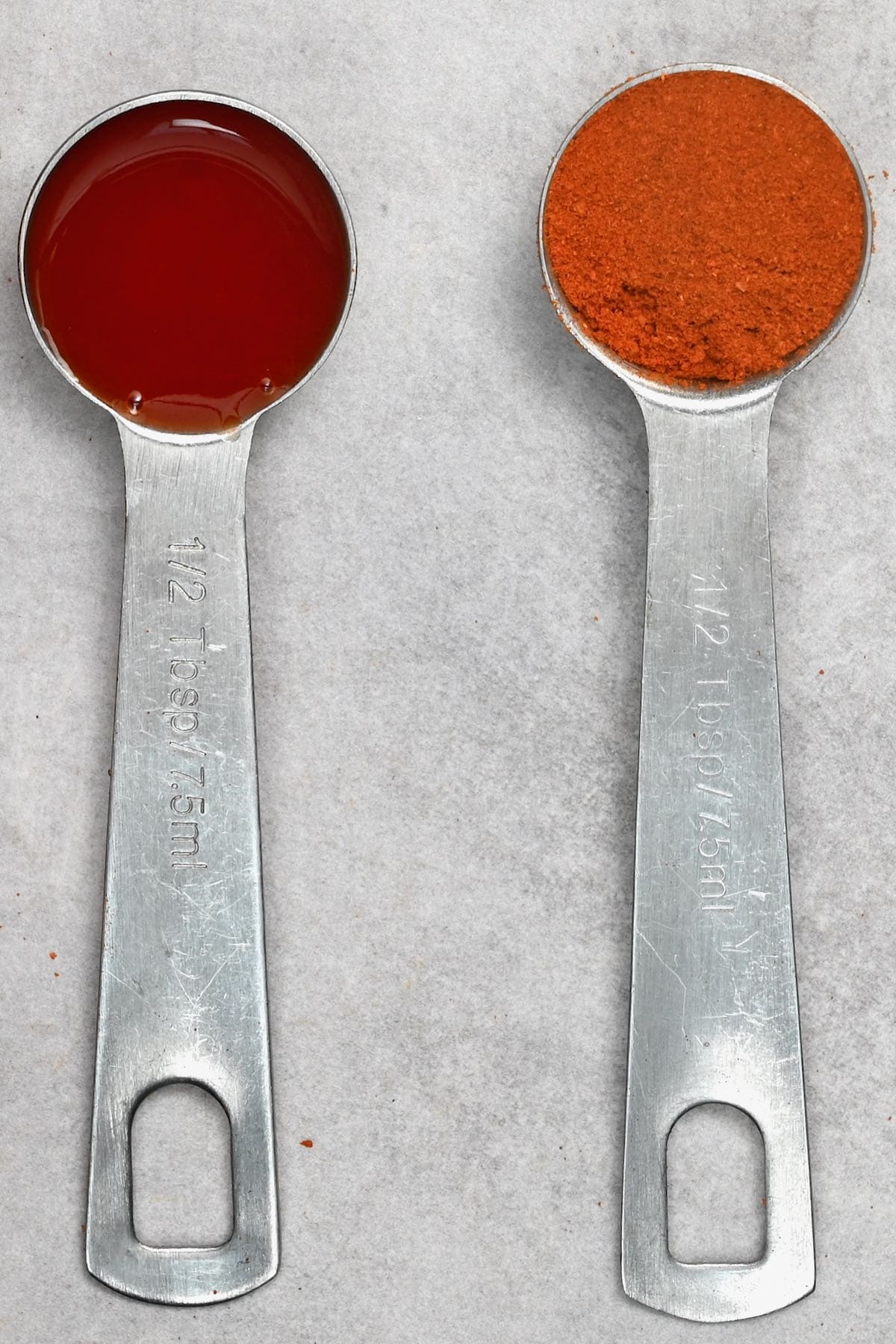
Ingredients and Measurements: Use a 1:1 ratio of hot sauce to paprika. You may want to alter this depending on how spicy the hot sauce you’re using is.
Gochujang (red pepper paste)
Otherwise known as Korean Chili paste, gochujang is a fragrant and spicy red pepper paste. It’s often used as a marinade or a dipping sauce. With its highly concentrated flavor and deep red color, it’s a good hot paprika substitute. Particularly if you’re making spicier dishes.
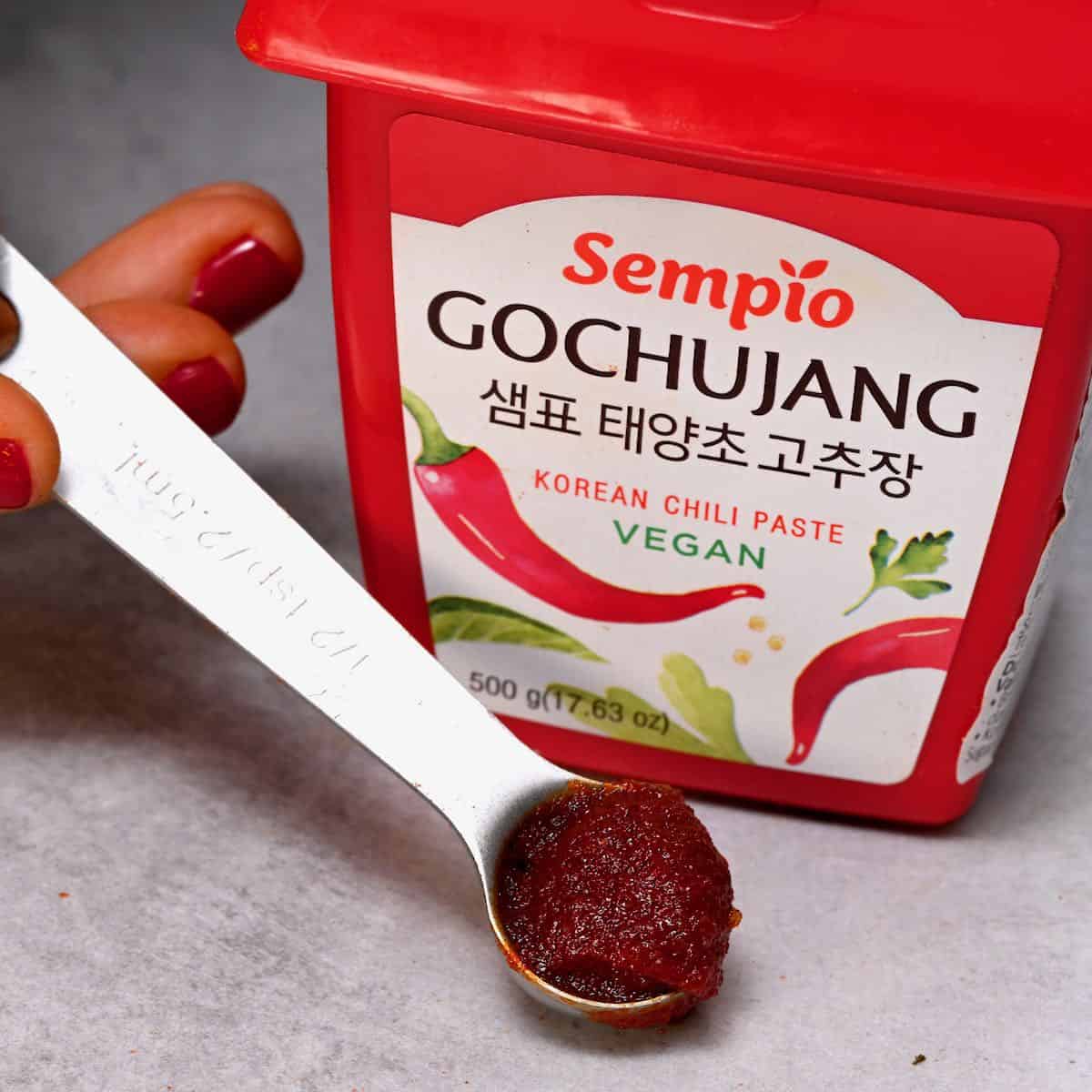
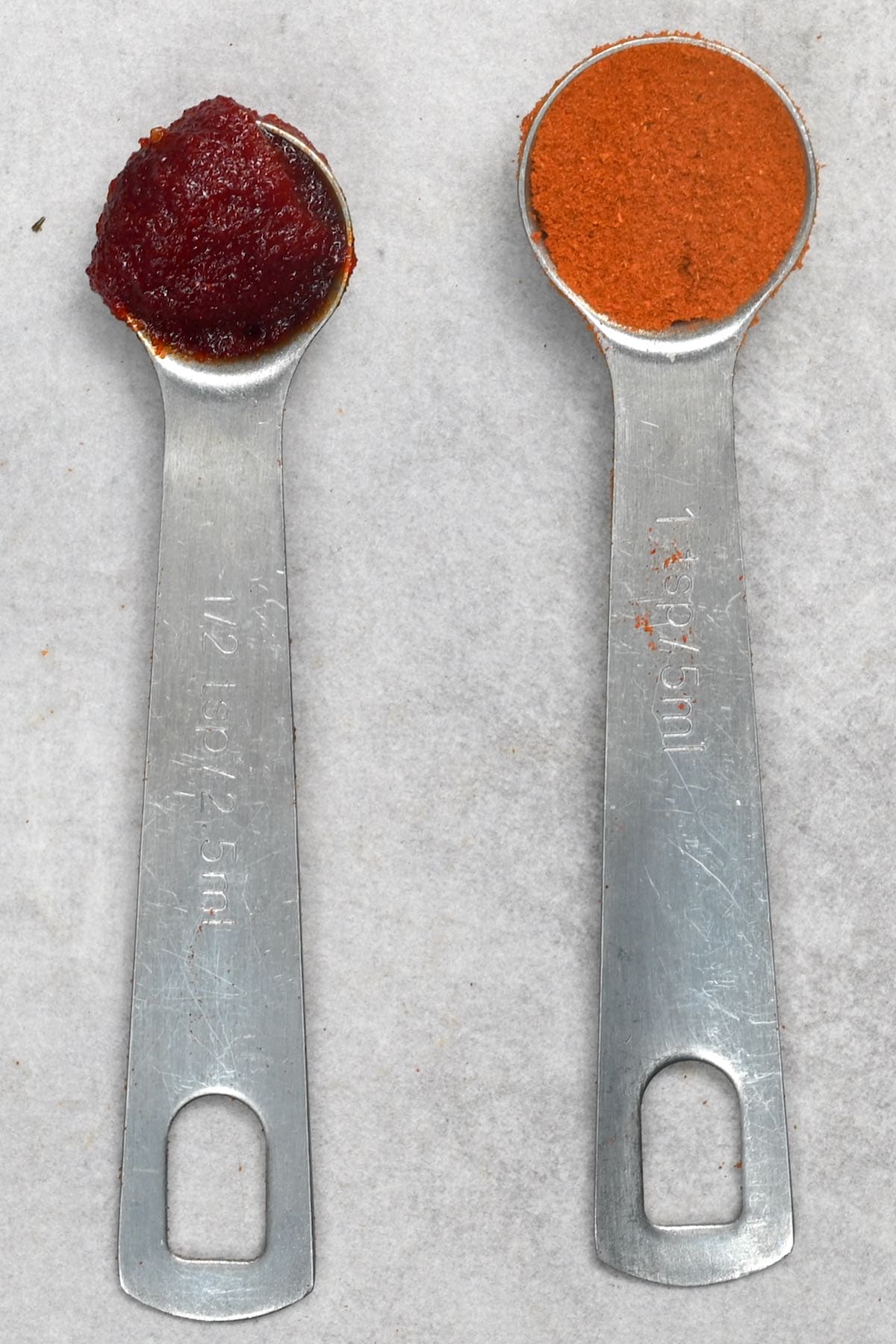
Ingredients and Measurements: Depending on your spice tolerance, use ½ to 1 tsp for every 1 tsp of paprika required. Start small and taste, working your way up until it’s at your desired taste.
Red pepper flakes (ground/crushed)
Because they’re dried, spicy red peppers get a distinctly smoky flavor when ground and concentrated from flakes. They have a similar texture to Spanish paprika when crushed, so they’re best used for pasta, soups, and stews that you want to have a beautiful red color.
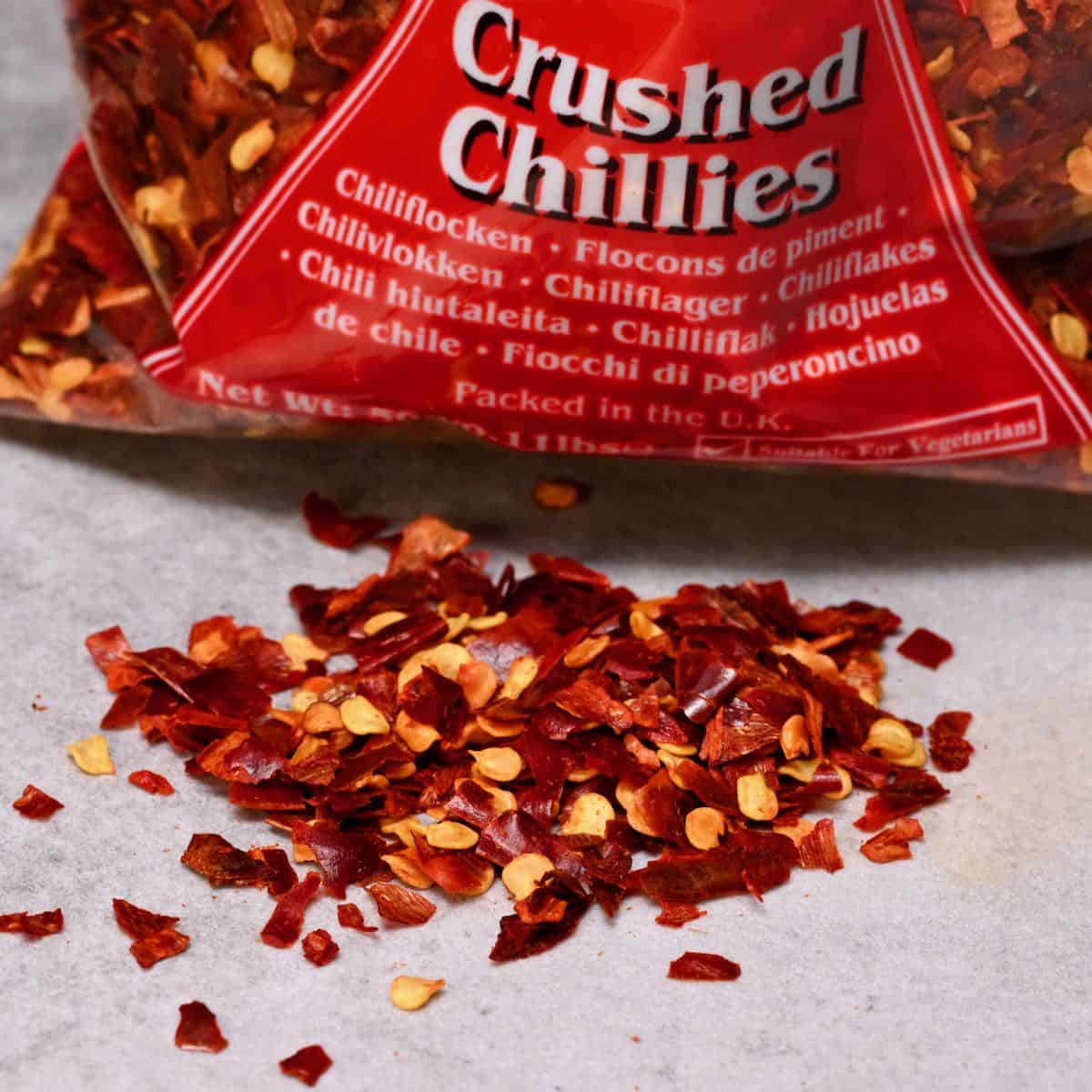
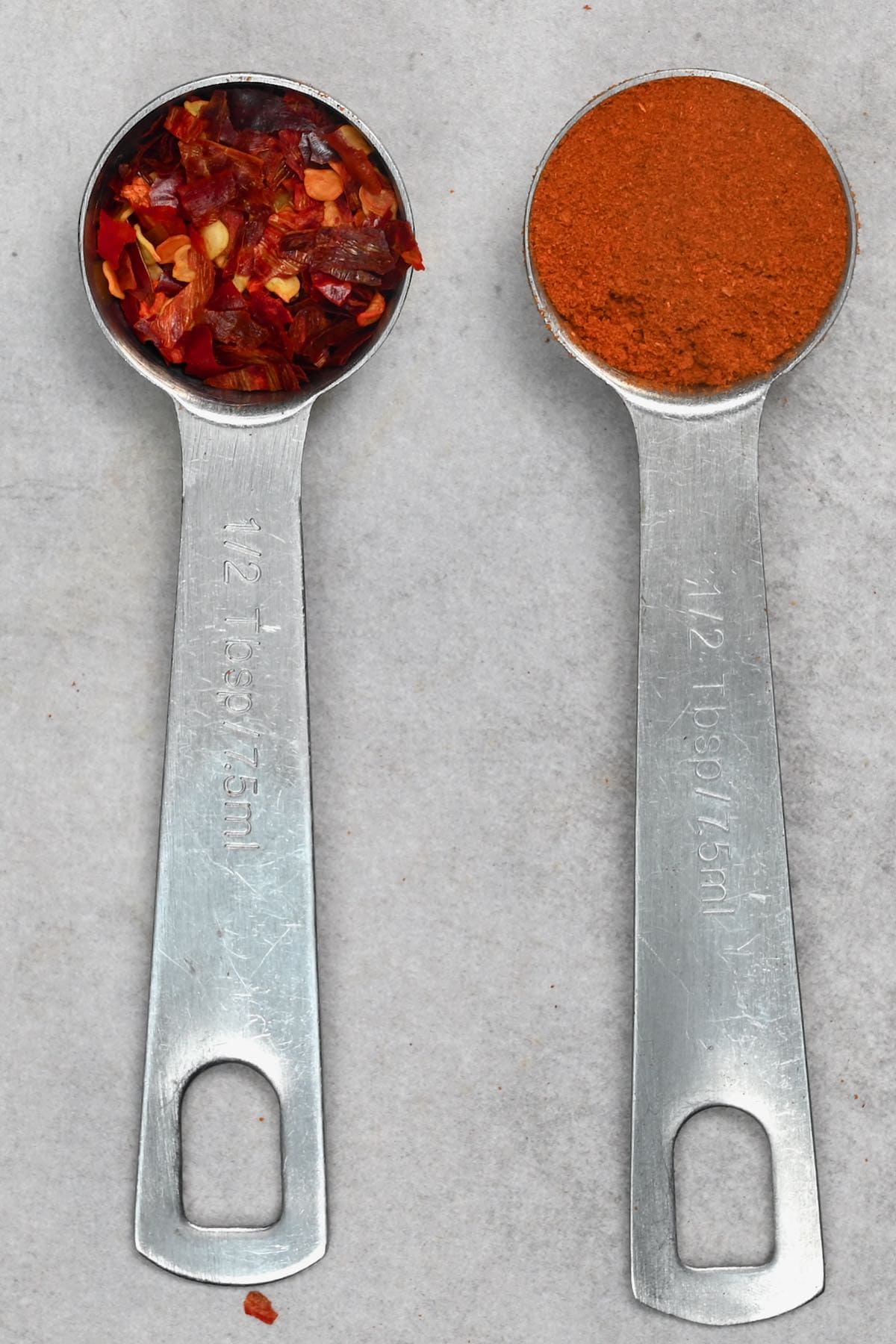
Ingredients and Measurements: Use a 1:1 ratio of red pepper flakes to smoked or hot paprika – you can adjust based on the recipe and your spice levels.
Black pepper or white pepper
Another option that’ll bring flavor and some heat but act very differently to paprika is white or black pepper. A better substitute for paprika in spice rubs or marinades, you won’t get the vibrant red of paprika, but you’ll still get a complex taste and some heat.
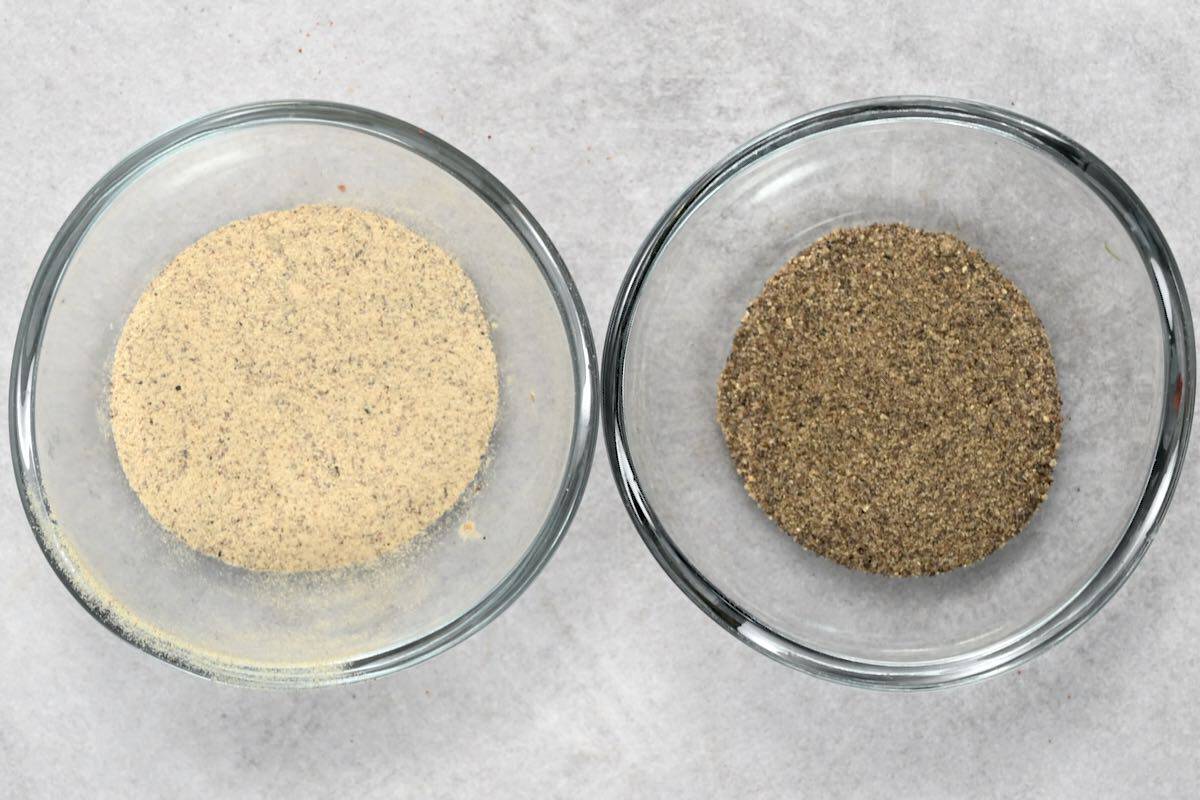
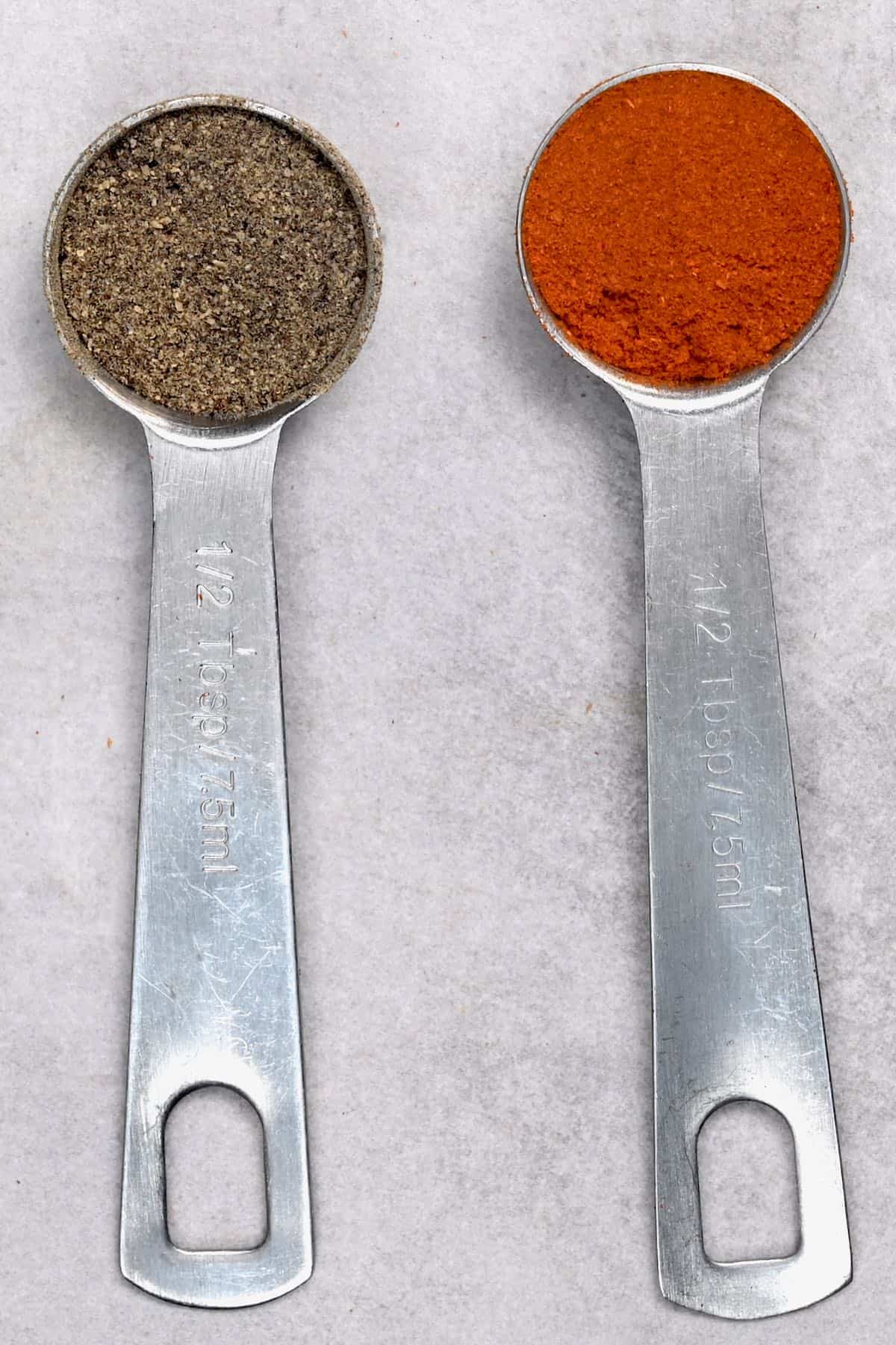
Ingredients and Measurements: Use equal amounts of black or white pepper as you would paprika.
Tomato powder
Best used to bring color, not flavor, tomato powder has a very mild taste but will give your dishes a brilliant red hue. Used as a sweet paprika substitute, try pairing it with white or black pepper or chili powder for more spiciness – especially if you’re making a hearty dish like chili or goulash.
Ingredients and Measurements: Use a 2:1 ratio of tomato powder to paprika – you may want to add more or less depending on the color you want. Pair with other spices to bring heat if you prefer.
If you try any of these substitutes, let me know how it goes in the comments below. I’d appreciate a recipe card rating and would love to see your recipe recreations – tag me on Instagram @Alphafoodie!
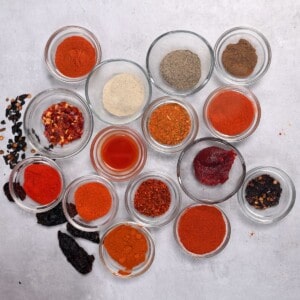
15 Best Substitutes for Paprika
Ingredients
to substitute
- 1 tsp paprika
Instructions
Pimento pepper
- Use 1 tsp pimento powder if using it as a sweet paprika substitute – for more heat, you may need to increase your measurements. Use as the recipe instructs.
Ancho pepper powder
- Use ½ tsp of ancho pepper powder as the flavor is more concentrated. Use as the recipe instructs.
Bell pepper powder
- Use 2 tsp of bell pepper powder. Use as the recipe instructs.
Chipotle pepper powder
- Being significantly hotter than hot paprika, use ¼ to ½ tsp. You can use up to a 1:1 ratio if you enjoy spicy food but it will likely change the color of your dish. Use as the recipe instructs.
Guajillo pepper powder
- Use ½ tsp guajillo – you can increase it if you prefer a spicier dish. Use as the recipe instructs.
Gochugaru powder
- Use ½ gochugaru powder to substitute hot or smoked paprika. Use as the recipe instructs.
Cayenne pepper powder
- Depending on how much spice you like, use ¼ tsp or ½ tsp of cayenne powder. Use as the recipe instructs.
Aleppo powder
- Use ¼ to ½ tsp of Aleppo pepper in place of paprika. Depending on your spice preference, you can increase or decrease as you prefer. Use as the recipe instructs.
Chili powder
- Depending on your spice tolerance levels, use ¼ to ½ tsp of chili powder, though you can adjust to taste. Chili powder is best used in small amounts, so use sparingly.
Cajun spice
- Use 1 tsp of cajun spice when substituting sweet or smoked paprika. Use as the recipe instructs.
Hot sauce
- Use 1 tsp of hot sauce. You may want to alter this depending on how spicy the hot sauce you're using is. Use as the recipe instructs.
Gochujang (red pepper paste)
- Depending on your spice tolerance, use ½ to 1 tsp. Start small and taste, working your way up until it's at your desired taste. Use as the recipe instructs.
Red pepper flakes (ground/crushed)
- Use 1 tsp of red pepper flakes when substituting for smoked or hot paprika – you can adjust based on the recipe and your spice levels. Use as the recipe instructs.
Black or white Pepper
- Use 1 tsp of black or white pepper. Use as the recipe instructs.
Tomato powder
- Use 2 tsp of tomato powder – you may want to add more or less depending on the color you want. Pair with other spices to bring heat if you prefer. Use as the recipe instructs.










